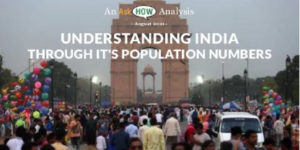Punjab will be a very different challenge for AAPfeatured
The election results in Punjab may have reminded the Aam Admi Party (AAP) of their sweeping victory in Delhi, but the challenge of running the government would be very different. If governing Delhi, was like life for a DINK — Double Income No Kids — couple, governing Punjab would be the equivalent of SINK — Single Income Numerous Kids.

The task of governing any state is not easy. Delhi governments have the additional challenge of dealing with the central government that may not always share its point of view. That said, governing Delhi has two big advantages. The state can generate a much higher level of tax revenues and it does not have many of the expenses that most other states do. It is a double income state with no responsibility for some crucial sectors. Let us first look at the tax revenues of Delhi.
State governments in India get their tax revenue mainly from their share of Goods and Services Tax (GST) on all goods and services and from Sales Tax on fuel and alcohol. More goods and services are consumed in urban areas than in rural areas. Delhi is mainly urban and hence it is natural that its tax revenues are much higher than of rural states. Delhi has an additional advantage — the spending of Central government.
The Central government has many offices and employees in Delhi. Then there is the Delhi Cantonment with numerous army personnel. Additionally, a significant portion of central police forces is based in the city. The spending on these generates additional taxes for the state government. A central government employee buying a car in Delhi, would be giving the state government significant amount of money as State Goods and Service Tax (SGST). When the army builds a new building, it would give significant money to the state government by the way of SGST on steel and cement. So not only does the Delhi government get the advantage of governing a predominantly urban area, but also it gets the benefit of a lot of spending of central government.
This ‘double income’ advantage is reflected in Delhi’s tax collections. The GST collection of Delhi is many times higher than that in much larger states. As this link shows, the GST collection in Delhi was the ninth highest in the country. It beat many large states such as Rajasthan and Kerala. Punjab came in at 17th.
The higher tax income is not the only advantage in governing Delhi. It also has the benefit of not having to undertake spending on areas that other states need to. One of the major spending that Delhi does not have to do is on policing.
Delhi police comes under the central government. While this severely curtails the potential political impact of a Delhi CM, it also gives the state a big benefit in its budget. In 2021–22 the Central government budget allocation for Delhi police was more than 8,500 Crore. That was approximately one eighth the total budgeted expenditure of the state! Land use in Delhi is under the Central government and hence a lot of spending in the capital does not come from the Delhi budget. However, the biggest expense advantage for Delhi in my view, is not having to spend on agriculture and rural development.
Governments have to spend a lot of money on rural areas. This expenditure could be on public works to support agriculture, such as irrigation canals and dams. Or it can be for price supports or subsidies for inputs such as electricity. Additionally, providing basic services in villages can be more expensive than providing the same services in urban areas. A primary Health Centre (PHC) in a densely crowded Delhi slum would take care of many more people than a PHC in a relatively sparsely populated village. Hence, the per person cost of providing a PHC would be lower in urban areas than it is in rural areas. This would be true for many other amenities such as schools.
This advantage in governance of mainly urban centers as compared to governing larger areas with significant rural populations is well understood. The book ‘How Asia Works’ talked of the relative ease of governing small city-based countries such as Hongkong and Singapore with larger countries and this is what it had to say
‘Offshore centers are not normal states. Around the world, they compete by specializing in trade and financial services while enjoying lower structural overheads than other countries, which have larger, more dispersed population, and agricultural sectors that drag on productivity. Offshore centers’ lower overheads mean that they also have a bult-in fiscal advantage. Yet, they can never exist in isolation — they are in a strict sense parasitic, because they have to have their host or hosts to feed on.’
Delhi does not have the responsibilities that other Metros like Mumbai and Bengaluru have. It is free of any economic ‘drag’ that rural areas impose on these Metros.
The DINK status of Delhi would have meant that governing any other state would be tougher. What compounds the problem for AAP is that Punjab is not a particularly well governed state. Not only is it a single income state, but also many of its sectors are in poor shape. It is a Single Income Numerous Kids state and many of its kids are old, cynical and worn out.
As I discussed here, Punjab has done particularly poorly in the last few decades. In 1980–81, it was the state with the highest per capita Net State Domestic Product (NSDP). NSDP is a measure of income of the state. Now it has dropped out of top five. The problem of its farmers came into sharp focus when many of them protested near Delhi for months. Farmers in Punjab are stuck growing crops that they sell to the Central Government at Minimum Support Prices — an arrangement that is not sustainable. The state also faces significant law and order challenges. Additionally, the state has been mismanaged for some time now and is much more indebted than most states. In 2019–20 [1], the debt servicing burden of Punjab was Rs. 57, 741 Crores and its Tax revenues (including its share of central taxes) was Rs. Rs. 40,341 Crore. The debt servicing burden of Delhi was just Rs. 6,139 Crores when its tax revenues were Rs. 36,566 Crores.
The fact that governing Punjab will be more difficult than governing Delhi does not necessarily mean that AAP would not be able to do it. It is just that they will have to do a lot of learning on the job. What worked in Delhi may not work in Punjab. However, great politicians and administrators are able to adjust to changed circumstances. By their huge victory in Punjab, AAP has shown that they are very good politicians. I hope that they are able to show that they are great administrators too. The state and the country would be better off for that.
[1] I have used the 2019–20 figures as they were least impacted by Covid-19.
My thanks to Madhavan for helping me understand finances of Delhi and Punjab. Views and errors mine.
Author –
Yogesh Upadhyaya
(Yogesh Upadhyaya is one of the founders of AskHow India. Blogs are personal views.)
You can follow AskHow India (@AskHowIndia) or me (@YogeshUpadh) on twitter or me on LinkedIn.
This is the third post in a series, State Wise, where I compare the economic trajectories of different states of India. The first two are
1. Why is Uttar Pradesh Such an economic laggard?
2. Indian States — The superstars, the laggards and the mighty fallen



